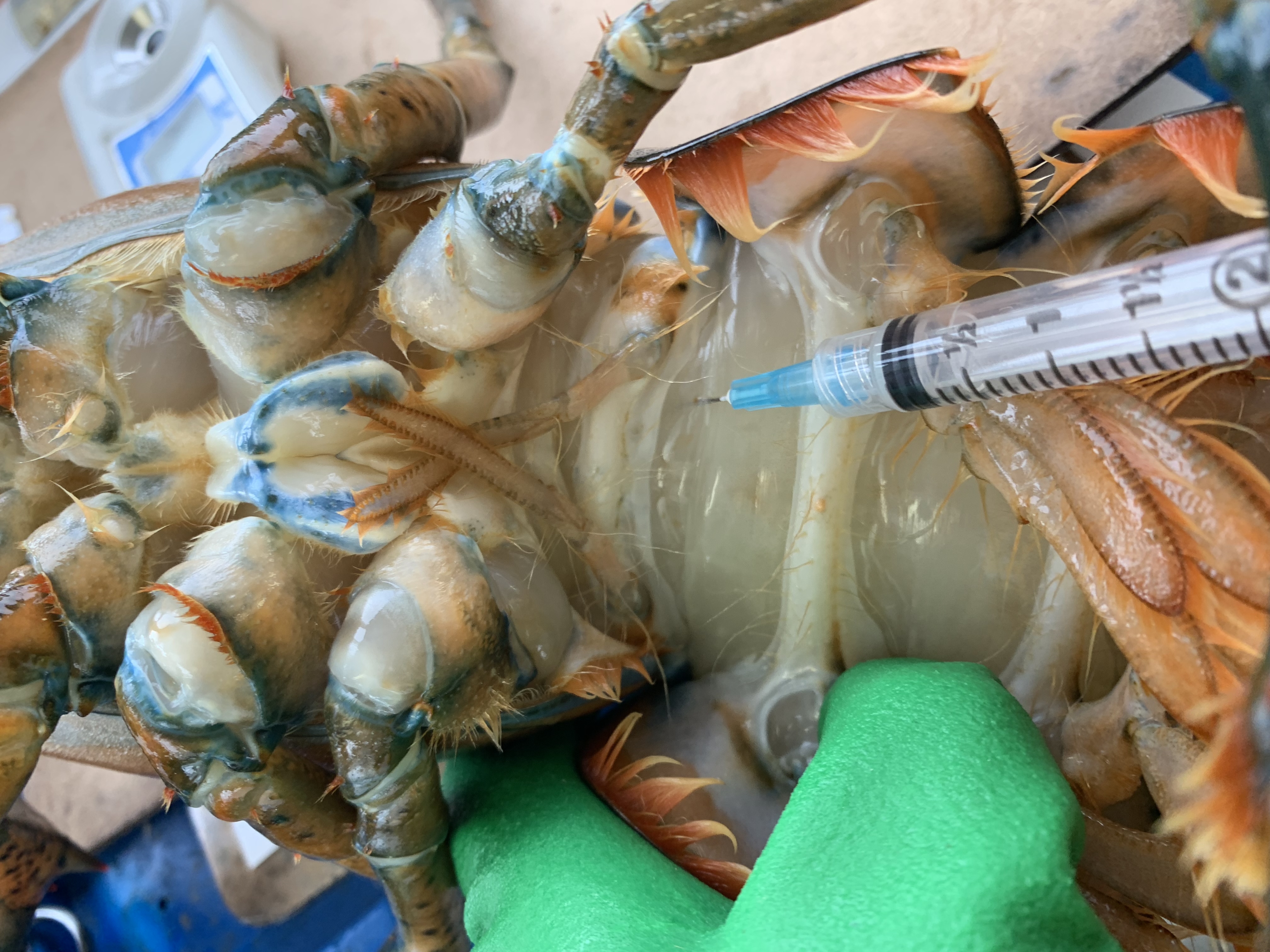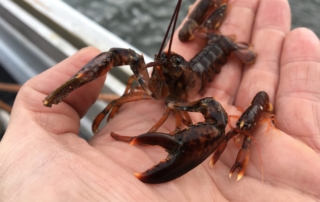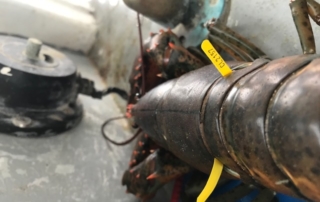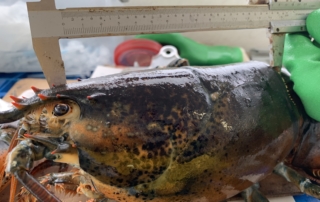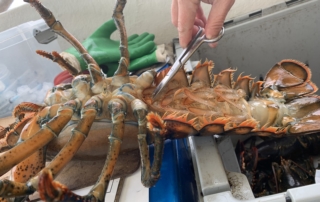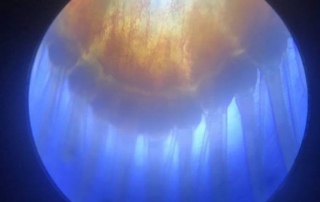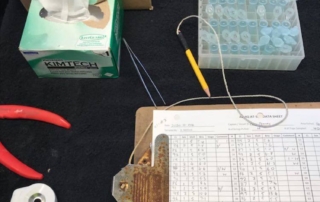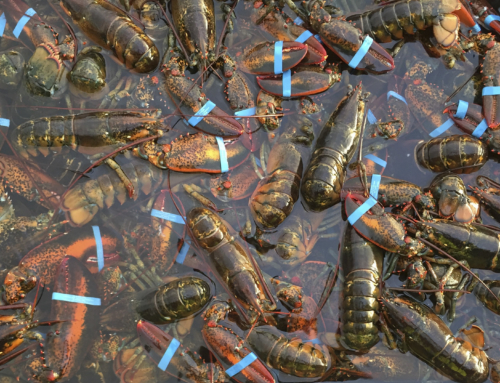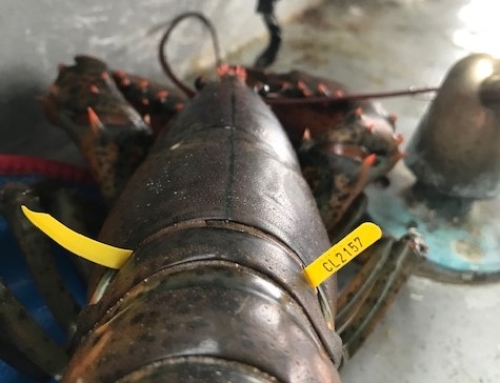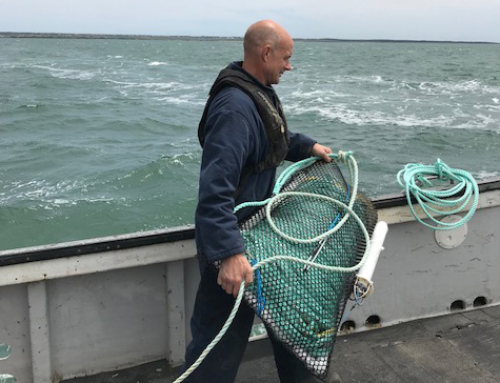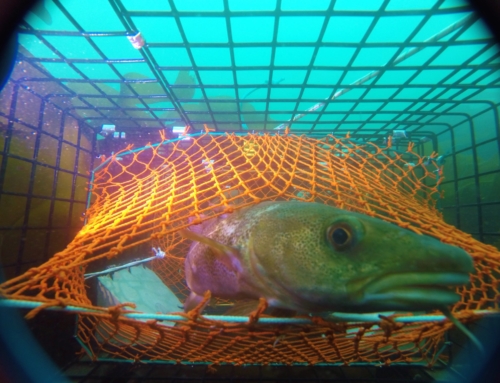The ALMQ is the continuation of a long-standing research initiative that has been a collaboration between Coldwater Lobster Association, lobster buyers, and scientific researchers with the Université Sainte-Anne. While the lobster industry in Nova Scotia faces many challenges, the quality of the lobsters during the start of the lobster fishing season in Southwest Nova Scotia remains one of the most significant issues.
Results of past ALMQ research has shown that lobster quality at harvest is directly related to the timing of the lobsters’ moulting processes. These processes are affected by a number of different factors including water temperature, available lobster diet, and other ecosystem factors. Understanding the incidences of those factors that control the proportion of soft-shelled lobsters and the annual variation in lobster quality is vital to the sustainability, health, and viability of the live lobster industry in Nova Scotia.
The ALMQ survey collects both water temperature data and the biological conditions of lobsters. Blood protein levels (Brix), shell hardness and pleopod stage analysis provide an indication (snapshot) of when the moult occurred and the quality of the lobster for the approaching season. While all of these analyses are important in the prediction of moult stage, increased Brix levels may be indicative of lobsters preparing to moult.
Reports for Current Year (2023-2024)
>> DOWNLOAD: 2023-24 ALMQ Final Lobster Quality Report – April 2024
>> DOWNLOAD: 2023-24 ALMQ Pre-Season Lobster Quality Report – November 2023
Reports for Previous Years (2020-2022)
>> DOWNLOAD: 2022-23 ALMQ Final Lobster Quality Report – April 2023
>> DOWNLOAD: 2022-23 ALMQ Pre-Season Lobster Quality Report – November 2022
>> DOWNLOAD: Lobster Quality 2021-2022 Pre-Season & In-Season Sampling Program – March 2022
>> DOWNLOAD: 2021-22 ALMQ Pre-Season Lobster Quality Report – November 2021
>> DOWNLOAD: 2020-21 Atlantic Lobster Moult & Quality Final Report – March 2021
>> DOWNLOAD: 2020 ALMQ Pre-Season Lobster Quality Report – November 2020
WATCH THE MOULTING PROCESS
Watch a rare blue American Lobster (Homarus americanus) molting in this sped-up video. This blue lobster is only about one in about 5 million; a blue lobster is missing most of its red and yellow pigments.
When a lobster grows too big for its carapace, it struggles out of it. At the same time, its soft body absorbs water to expand its size. The soft body hardens to be come its new shell.
CREDIT: Seacoast Science Center – www.seacoastsciencecenter.org


